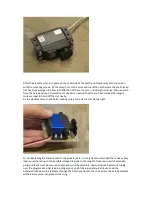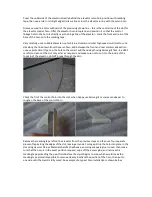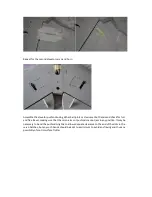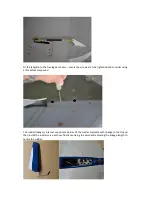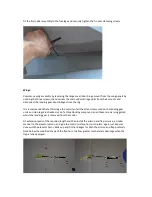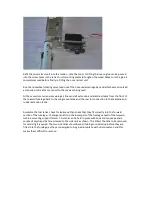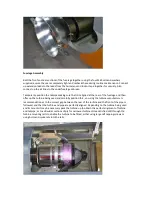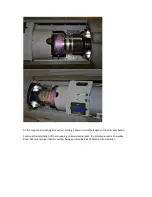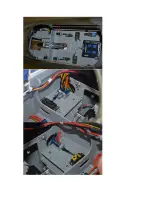
Cover the underside of the elevator directly behind the elevator servo horn position with masking
tape, then use a ruler or straight edge to draw a line across the elevator in line with the servo horn.
Draw a second line 5mm outboard of the previously drawn line – this is the centre line of the slot for
the elevator control horn. Offer the elevator horn into place, and position it so that the control
linkage hole in the horn is directly over the hinge line of the elevator – mark the front and rear of the
base of the horn onto the masking tape.
Very carefully use a suitable diameter router bit in a Dremel or similar high speed multi tool to cut a
slot along the line drawn from the servo horn, and between the front and rear marks made earlier –
use eye protection! Open up the hole to the correct width and depth using Permagrit files – be VERY
careful to clean out the slot only as far as required and make sure not to cut into the inside of the
top skin of the elevator, do NOT break through the skin.
Check the fit of the control horn into the slot, when happy use Permagrit or coarse sandpaper to
roughen the base of the control horn.
Remove the masking tape left on the elevator from the previous steps and then use four separate
pieces of tape along the edges of the slot, leaving around a 1mm gap. Glue the horn into place in the
slot using Hysol or Deluxe Materials AeroTech adhesive, ensuring adequate glue is used, then make
sure that the horn is in the exact position required, wipe off the excess glue, and remove the
masking tape protecting the paint finish before the Hysol begins to cure, which would make the
masking tape almost impossible to remove cleanly. Recheck the position of the horn, then put to
one side until the Hysol is fully cured. An example of a typical horn installation is shown below.



